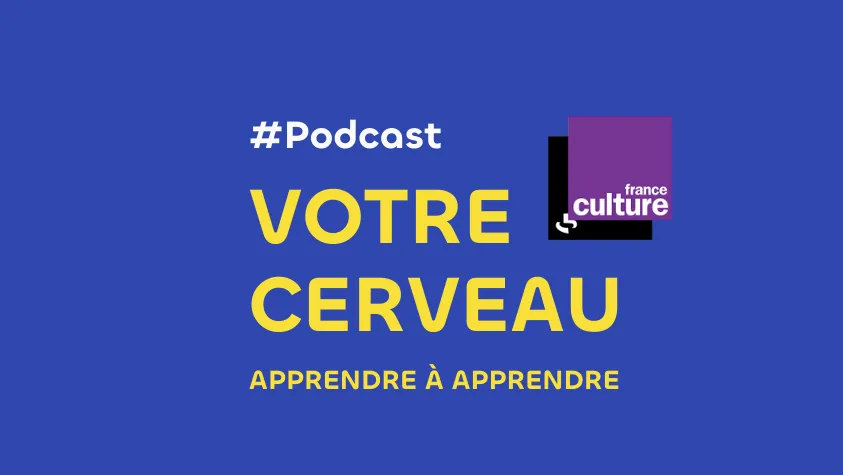
Dyslexia in children: understanding for better support

Dyslexia, what is it?
Dyslexia is a neurodevelopmental disorder characterized by difficulties in the acquisition and processing of reading.
The WHO (World Health Organization) defines dyslexia as “a specific learning disorder of neurobiological origin. It is characterized by difficulties in recognizing words accurately and/or fluently, and by poor spelling and decoding skills. These difficulties generally result from a deficit in the phonological component of language, which is often unexpected in relation to other cognitive abilities and effective classroom teaching. Secondary consequences can include problems with reading comprehension and a reduced reading experience that can hinder vocabulary and background knowledge.”
Dyslexia is a specific disorder of learning to read, which can affect a person’s ability to read, spell, speak and, often, learn a second language. It manifests itself in difficulty with phonological processing, i.e. the recognition of individual sounds in spoken language, and/or visual-attentional processing, i.e. the ability to recognize letters and written words.
✏ Note: Dyslexia is in no way related to a child’s intelligence or upbringing.
Is this disorder hereditary?
The hereditary link is recognized within the scientific and clinical community. It’s a bit like a family inheritance: if certain members of your family are dyslexic, there’s a greater chance that this particularity will manifest itself in you or your children.
Is it a disease?
Absolutely not! Dyslexia is not a disease: it’s a neurodevelopmental disorder. Neuroscience research shows differences in brain connectivity between dyslexic and non-dyslexic children, which would explain why people with dyslexia struggle to read fluently.
In other words, a dyslexic brain naturally functions differently from a neurotypical brain; neither better nor worse!
Is dyslexia treatable?
Like all learning disorders, dyslexia persists over time. Nevertheless, the difficulties encountered in learning to read and write can be compensated for and even overcome by dyslexic people so that they have little or no effect on their daily lives, their learning or their academic and professional success.
Early diagnosis, appropriate support and the implementation of compensation strategies are the keys to learning to live well with this disorder.
✏ Did you know? Many famous people are (or were) dyslexic: Steve Jobs, Picasso, Einstein, Spielberg… But also world-famous writers like Agatha Christie, Jules Verne or Flaubert.
What are the signs of dyslexia?
As always, only a medical professional, in this case a speech therapist, is capable of making a diagnosis. But even without being an expert, here are a few signs that, if you observe them in your child, may prompt you to consult a professional.
- A slowness in reading and a fear of having to read aloud.
- Frequent pauses and hesitations. When reading a simple sentence like “The cat sleeps on the sofa”, the child pauses, resulting in something like “The cat… sleeps… on… the… sofa”.
- Inversion or omission of letters or words when reading. For example, the child reads “aminal” instead of “animal” or “fomage” instead of “fromage”.
- Difficulties recognizing or memorizing certain words. The child frequently reads the word “school”, but each time he hesitates or deciphers it as if he were seeing it for the first time.
- Marked difficulties with spelling (dyslexia is often accompanied by dysorthographia).
✏ Note: you may well spot one or more of these signs in your child, without them being dyslexic. Every child learns at his or her own pace! Hesitant reading at the age of 6 or 7 can be perfectly normal. If you have any concerns, ask his teacher for advice, who will be able to tell you how he compares to the children in his class.

The importance of early diagnosis
It’s the speech therapist who makes the diagnosis, through a speech assessment. In general, it’s not made with certainty until the age of 7 or 8 (at the end of the CE1 year), an age at which the majority of children have mastered reading and writing.
Early identification of dyslexia means that care can be taken as soon as the first symptoms or delays are observed in the acquisition of written language. Acting early means adapting learning to each individual child, so that they don’t feel left out or less competent than their peers. At school, teachers can personalize their approach, creating a learning environment that takes account of the dyslexic child’s difficulties. At home, everyone can play a part in supporting the child and nurturing his or her desire to improve reading.
If you or your child’s teacher suspect dyslexia, consult your doctor or pediatrician as soon as possible. He or she will first determine whether the difficulties encountered are linked to a vision or hearing problem, and, if he or she deems it necessary, will prescribe a speech and language assessment.
The different faces of dyslexia
As well as making the diagnosis, the assessment enables the speech therapist to specify the nature of the disorder:
- Phonological dyslexia: this is the “star” of dyslexias, as it is the most widespread. Affected children have difficulty deciphering graphemes and phonemes, making grapho-phonemic correspondences – i.e. pronouncing letters and letter groupings – putting them together to form words. This leads to difficulties in reading new words.
- Surface dyslexia: here, it’s the appearance of words that plays tricks. The children concerned read phonetically, which can lead them to stumble over words whose writing does not match their pronunciation (such as “monsieur” or “femme”, which do not read as they are written), even if they are familiar.
- Mixed dyslexia: a cocktail of dyslexias! It combines features of phonological and surface dyslexia.
- Visuo-attentional dyslexia: children with this form of dyslexia have trouble recognizing a letter or whole word at a glance. This may be due to an attention disorder and/or an optical defect in the eye. Those living with this form of dyslexia can sometimes skip words or even lines while reading.
Depending on the type of disorder, the speech therapist proposes adapted re-education and compensation strategies.
How to support a dyslexic child
The speech therapist, a valuable ally
The role of speech therapy goes far beyond diagnosis. It offers a gateway to success in reading and writing. With his expertise and involvement, each child discovers his or her potential at his or her own pace.
Thanks to a personalized approach, he offers your little protégé adapted exercises that reinforce his skills and boost his sense of competence and self-confidence. Working hand in hand with parents and teachers, the speech therapist creates a positive and stimulating environment, where the dyslexic child is encouraged to progress.
Supporting a dyslexic child at home
For a dyslexic child, the world of words is like a complicated puzzle… Really complicated. But with love and support, every piece finds its place 😉
- Take the time to read with your child. Choose books that deal with subjects that interest him and feed his desire to read: a story about dinosaurs or his favorite superhero, for example.
- Prefer texts with an airy layout, wider line spacing and sans-serif fonts. This can greatly aid reading.
- Encourage reading aloud. This can help to better understand the text and reinforce word memorization.
- Propose educational games that provide practice in reading and writing.
- Use apps or software specially designed for dyslexics, such as Poppins or that make learning to read easier, such as Graphogame. Some tools can change font, background color or even read text aloud to aid comprehension.
- Any opportunity to practice reading is a good one! If your loulou is a fan of games on his tablet: offer him the Babaoo educational app.
- Patience and understanding: everyone progresses at their own pace, and dyslexic children have an extra challenge to overcome. Let’s avoid rushing them or comparing them to others and recognize their efforts and progress.
- Celebrate every talent: every child has something they excel at. Encourage them to discover it.
The Babaoo recap
Dyslexia, a neurodevelopmental disorder linked to reading, manifests itself in difficulties in deciphering and writing words. But it’s comforting to know that early intervention, coupled with tailored support, can make all the difference. The good news? With patience, understanding and the right tools, every dyslexic child has the potential to flourish and shine. ⭐
➡️ Also worth reading: How to recognize dyslexia, dysgraphia and dysorthographia?
You may also be interested in these articles


